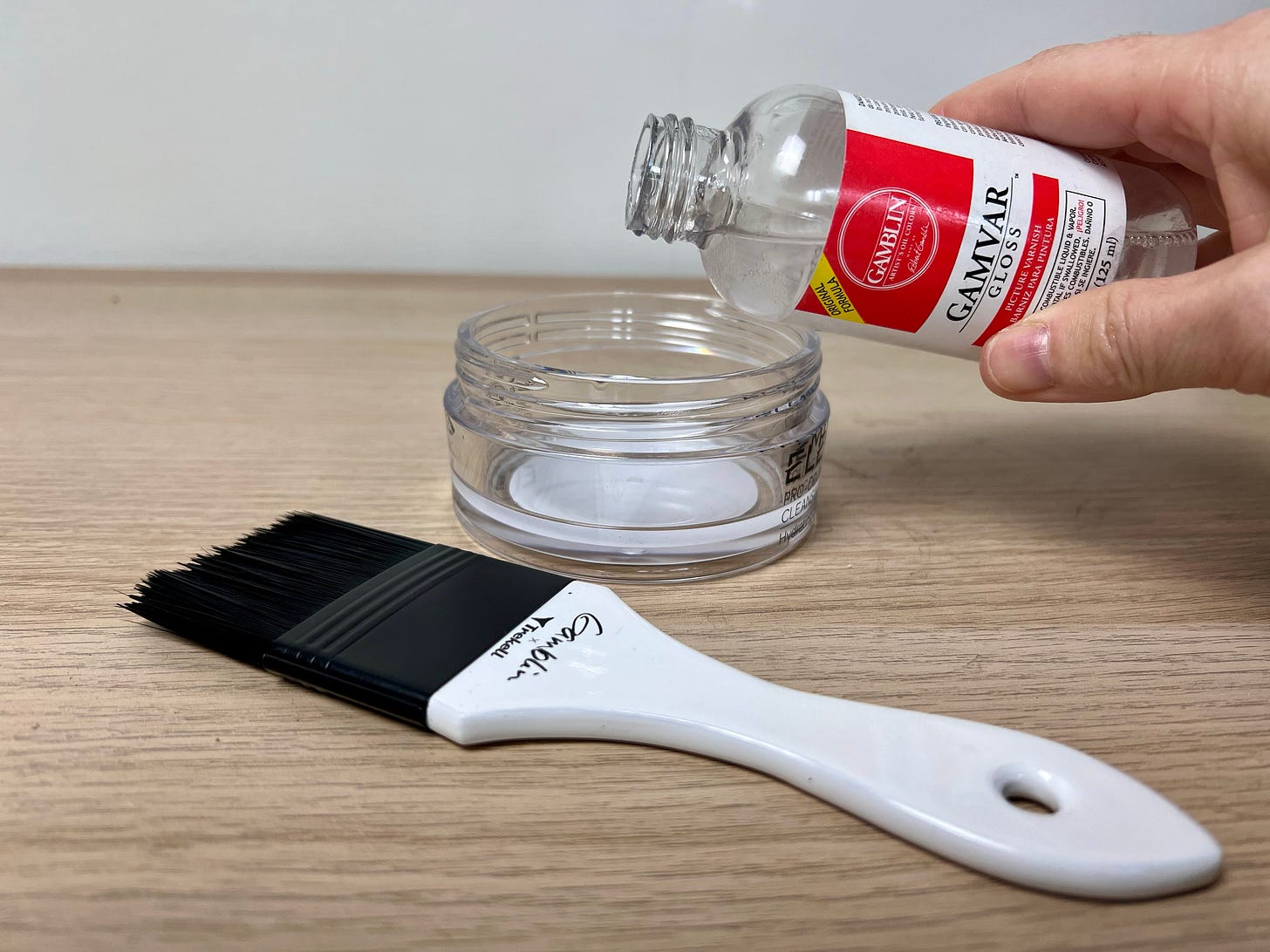Hi there
It’s been a while! How has your summer been?
Me? Well - I’ve just surfaced from an awesome 6 weeks delivering the first run of my new course - “Mastering Equine Realism in Oil Painting”. It’s been hard work - staying one step ahead of my students creating videos and workshops and completing the painting alongside. But it’s been a blast - I had so much fun and I think my students did too!
And as we got to the end of the course, what do you think was the most common question I was being asked?
You guessed it - “ how long do I have to wait before I can varnish my painting?”
I thought I’d share the answer with you too since it’s probably something that you have also had to consider!
The historical & ideal practice is to wait until your oil painting is completely dry before applying varnish (i.e. 6 to12 months). However, with modern paints, mediums and varnishes, there’s often some confusion about how long we need to wait.
So, although the old rule of thumb is to wait 6-12 months, it really can vary. If you’ve got thick paint or are working in a humid environment, it might take even longer. On the flip side, if you’ re using fast-drying mediums, alkyd oil paints, or applying the paint in thin layers, you might have a shorter wait.
To check if your painting is dry, try a few tests: press your thumbnail into the thickest area—if it leaves no mark, you’re good! You can also press the flat of your thumb and twist a bit to see if the surface remains unchanged, or wipe with a solvent to check if any colour comes off.
Now, here’s the kicker: if you apply varnish too soon, while the paint is still drying, it’ll seal off oxygen and stop the oil paint from curing. This could mean it might never fully dry! Plus, the varnish can end up merging with the paint, losing its ability to act as a separate, removable layer.
And if that’s not concerning enough, a hard layer of varnish over a still-curing painting can crack or wrinkle as the paint underneath it continues to shift and contract. Yikes!
So, patience is key when it comes to varnishing an oil painting. Giving your work the time it needs to dry properly not only preserves the integrity of the paint but also ensures that any varnish applied later will function effectively.
Trust the process, and your artwork will thank you for it!
HOWEVER! If you’re in a hurry, there are things you can do.
We all get it - sometimes we’re up against a time limit and need to get that painting ready to show or deliver to a client and just don’t have 6 months to wait. This is where Retouch Varnish comes into play.
‘Retouch’ is a unique type of removable varnish that can be applied much earlier in the painting process, even before the painting is fully dry. Since it is a thin formulation, oxygen can still permeate the surface, allowing the painting to continue to cure while offering a temporary layer of protection. Once the painting is fully dry, the retouch varnish can be removed and replaced with a final layer of varnish (although not strictly necessary).
Its versatility makes it a valuable tool for us artists looking to protect our work long before that full 6-12 month curing period is up.
In addition, there is a ‘final’ varnish made by Gamblin - ‘Gamvar’ - which is a modern, removable varnish that can be applied earlier than other ‘final’ varnishes - when the thickest parts of your painting are dry and firm to the touch. This is not the same as a retouch varnish and shouldn’t be applied as early as that, but it is a helpful alternative if your painting is 1-2 months old and the thickest parts of your painting are totally touch-dry, leaving no marks when a fingernail is pushed into it.
I hope this has been helpful to you. I’ll be continuing a little series about varnishing over the next few weeks - I hope it might answer some burning questions. Look out for the next instalment!
Equine Painting Course
This is the painting that we created during the course. Press play to watch all the final details going in.
P.S. I’ll be opening registrations again in November and will include a self-paced option for those not wanting to commit to any workshops.
You can join the Waiting List if you don’t want to miss it - and secure a VIP discount when registration opens too!
In the mean time - happy painting!
As always, I love to hear from you.







